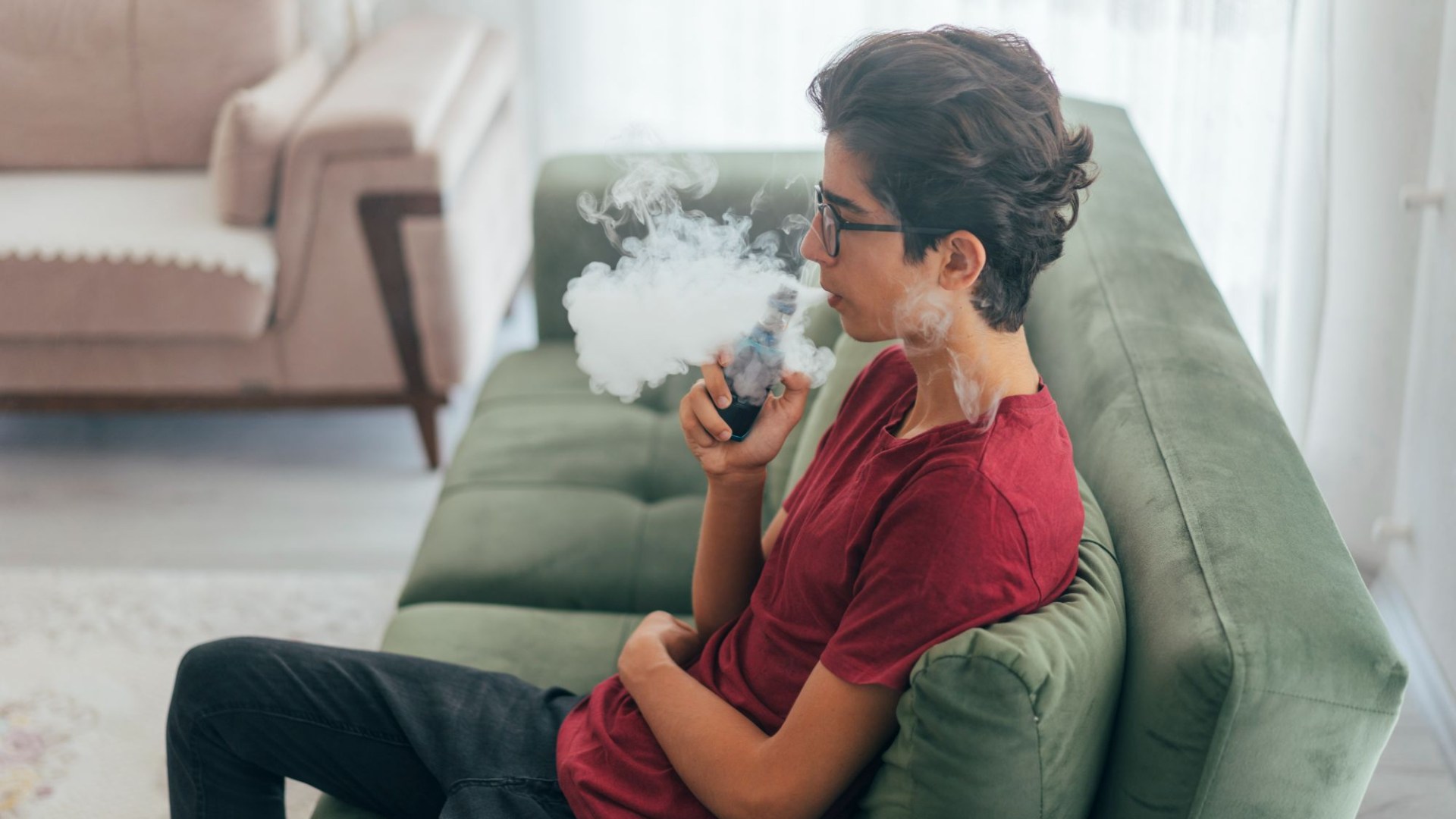VAPING inside your home may not be as harmless as you thought.
Though the cloud of vapour you exhale may only be visible for an instant, researchers found that it settles into a “thick, oily layer” of toxic slime across surfaces.
1
As the sticky film of vape chemicals lingers counter tops or sofas, it can then seep into skin that comes in contact with the surfaces.
Though previous research has touched upon the dangers of second-hand vape smoke, this new study from the University of Technology Sydney (UTS) highlights yet another way e-cigs might harm those who aren’t even using the devices.
The liquid packed into vape pens will into most cases have nicotine in it, but it can contain a number of other chemicals too.
This includes propylene glycol, glycerol, as well as flavouring and other additives.
When heated it can produce toxic chemicals like formaldehyde, acetaldehyde, and acrolein, a hazardous air pollutant, researchers said.
Study co-author Prof Brian Oliver, from UTS and the Woolcock Institute of Medical Research, said: “When vapes are used indoors, or in a vehicle, the vapour condenses on surfaces forming a thick, oily layer, and this residue can be absorbed through the skin.”
Dr Richard Kim from the UTS School of Life Sciences, who led the study, added: “Visitors to the homes of friends or relatives who vape might not realise they’re being exposed to harmful chemicals just by touching bench-tops or sitting on the couch.
“People who vape need to understand that this doesn’t just affect them.”
Researchers also warned that the chemical film left over from vaping may have particular consequences on babies if their mums are exposed to it during pregnancy.
“Previous research has shown that vaping during pregnancy can cause serious harm to the baby, including increased risk of stillbirth, low birth weight and developmental problems,” Prof Oliver explained.
Researchers sought to find out whether oily vape residue left on surfaces may also have detrimental consequences.
The study team – led by Dr Chantal Donovan and Dr Kim from the UTS School of Life Sciences – tested out their theory using mice.
They exposed pregnant mice to e-cigarette vapour residue on towels.
Their offspring were then infected with flu, and their immune system response assessed seven days afterwards.
Researchers looked at immune responses in lung and bone marrow cells.
They found that in the exposed offspring, a specialised type of immune cell, called a CD8+ T cell, didn’t work as well.
CD8+ T cells are essential for producing an effective immune response against infections, as well as cancer.
But researchers observed “blunted activation” of the cells in mice whose mums had been exposed to e-cig residue.
Smoking vs. vaping
VAPING has been touted as an effective tool to help people quit smoking.
Though vaping is substantially less harmful than smoking, the habit isn’t completely harmless and comes with its own set of risks.
The NHS only recommends it for adult smokers, to support quitting smoking.
GP and author Dr Philippa Kaye explained to The Sun that the differences between vaping and smoking – and whether one is better than the other – is “complicated”.
“In a nutshell, vaping is better than smoking, but breathing air is better than vaping at all.”
Vaping exposes users to far fewer toxins – and at lower levels – than smoking cigarettes.
Switching to vaping significantly reduces your exposure to toxins that can cause cancer, lung disease, and diseases of the heart and circulation like heart attack and stroke.
These diseases are not caused by nicotine, which is relatively harmless to health. But research has still linked vaping to a higher risk of failure and lung disease.
Health risks of cigarettes
- Smokers are more likely than nonsmokers to develop heart disease, stroke, and lung cancer
- Smokers are at greater risk for diseases that affect the heart and blood vessels
- Smoking can cause lung disease by damaging your airways and the small air sacs
- Smoking can cause cancer almost anywhere in your body
- It affects overall health too, such as your mouth, eyes, immune system and fertility
Health risks of vaping
- They can cause side effects such as throat and mouth irritation, headache, cough and feeling sick
- They could lead to tooth decay
- They could damage heart health
- They could cause lung disease
- They could slow brain development
Read more on how vaping can affect your health here.
Sources: NHS, CDC
Dr Donovan said the study revealed for the first time that third-hand exposure to e-vapour while pregnant could result in significant, long-lasting effects on lung and bone marrow immune cell responses in mice.
She said: “The study supports the growing body of evidence of the dangers of e-cigarette exposure and highlights that even third-hand e-vapour exposure during pregnancy could have long lasting effects.”
But as the study – published in the American Journal of Physiology-Lung Cellular and Molecular Physiology – was conducted on mice, we can’t know that if the same effect would be observed in human babies.
In the UK, vaping indoors isn’t explicitly banned but most public places have their own rules.
For example, pubs, bars and restaurants tend not to allow people to use their e-cigs indoors.
But most vapers probably wouldn’t think twice about whipping out the pens in their own homes.
It should be noted that the NHS still upholds that vaping is a safer alternative to smoking, and in fact recommends taking up vaping in order to quit cigarettes.




